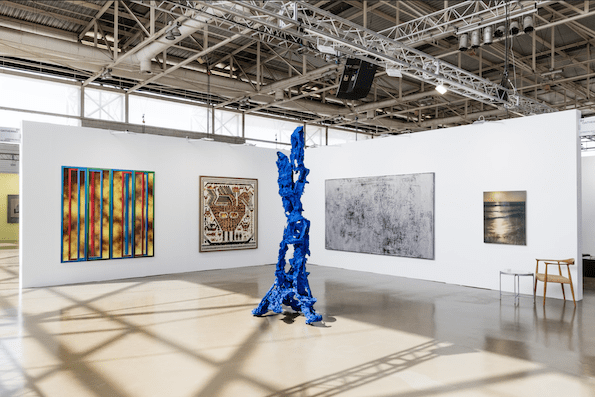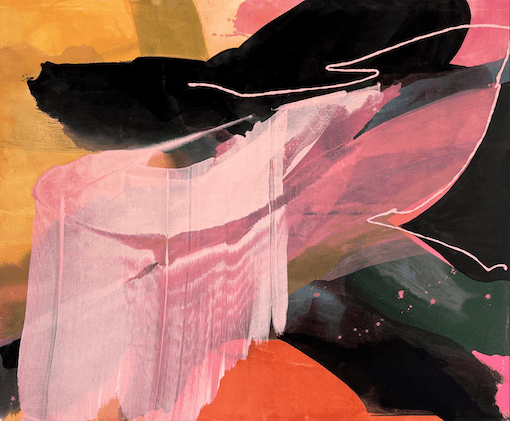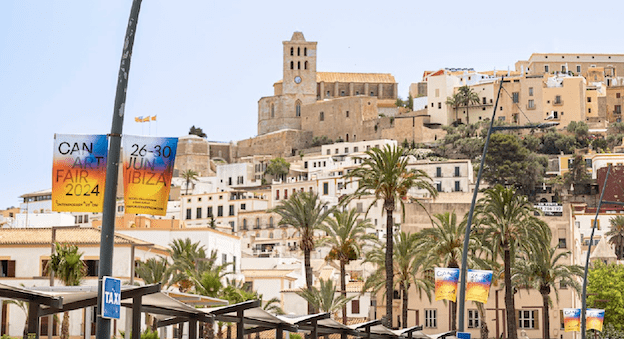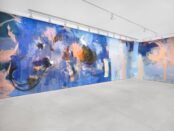Ibiza, best known for its mega clubs and raging nightlife, diverges from typical contemporary art fair settings. Yet CAN, or Contemporary Art Now, is now in its third year on the island. Under the curation of Saša Bogojev, who has been with the fair since its first year, the fair brings together an eclectic array of gallery presentations, from figurative and abstract paintings to photography, video installations, and sculptures. Bogojev emphasises the importance of contemporary art within the approach of CAN Art Fair, coining the term “Workation” to describe the blend of work and relaxation that characterises the event. With 35 participating galleries this year, including newcomers like Galleria Continua, Xippas, Madragoa, and Moisés Pérez de Albéniz alongside five galleries from Mallorca, the fair underscores its commitment to regional representation and the broader Balearic art scene.

A standout aspect of the fair is CAN Ibiza’s OFF Program, aiming to promote Balearic talent and connect the island’s artistic community with international audiences through exhibitions spread across the island. One, presenting the work of an Ibizan born, Madrid-based artist, Irene de Andrés, is held in a refurbished windmill turned exhibition space. The artist’s long-term research project explores the history of five abandoned nightclubs, looking at themes of myth, travel, and geography. Collaborations with DJs who once played at these clubs, such as the now-legendary Festival Club (Ibiza’s first club, active in the 1970s), explore the intersection of music and visual art. Originally conceived as a documentary, the project also unearthed artefacts such as broken vinyl records from the now-abandoned Glory’s club.

Other exhibitions address pressing environmental issues, both local and global. At SAFA in Santa Agnes de Corona, an installation by Christian Eisenberger occupies a defunct irrigation system site, untouched for over 70 years. The installation of snowmen, some melting in the heat, others equipped with pickaxes, serves as a reminder of Ibiza’s water challenges and broader environmental concerns. Meanwhile, at Can Garita & Los Enamorados in the north, Belgian artist duo Eric Colonel & Thomas Spit present ceramic faces in a former fisherman’s hut.

Back to the fair, and the special projects, which include an exhibition of vintage posters titled Postering Ibiza (1980-2020), photographs by Spanish photographer Oriol Maspons presented by Agony and Ecstasy, an Ibizan Gallery. Maspons gained recognition for his reportage, portraiture, fashion, and advertising photography during the 1950s and ’60s. However, from the late 1960s to the late 1980s, he spent holidays in Ibiza. His photographs of the island’s beachgoers and clubbers reveal the evolving attitudes towards nudity, sexuality, and freedom of expression in the post-Franco era.

The fair maintains a strong focus on painting, with an increased presence of abstract works complementing the figurative pieces that have defined previous editions. Highlighted artists include Christopher Page (Gathering), Margaret R Thompson (Arusha Gallery), Grgur Akrap (HAGD Contemporary), Masha Merci (Galerie Laetitia Gorsy — She BAM!), and Julien Saudubray (Valerius Gallery).

Founding Director Sergio Sancho emphasises CAN Ibiza’s mission to blend culture, business, and enjoyment. Also behind the UVNT Art Fair in Madrid, Sancho has a close connection with Ibiza. His new venture, opening in La Navarre, reflects the growing demand for cultural events on the island. He notes the island’s prolific cultural activities from the 1950s-’70s, particularly in 1959, contrasting with recent nightlife regulations implemented in 2010. CAN Ibiza nods to this history with an opening party at Pacha and evening events starting at 7pm.

As the summer season begins in Ibiza, CAN Art Fair underscores the island’s allure as a cultural hub, blending art, nature and the environment with the slow-paced Mediterranean lifestyle.
CAN Ibiza‘s 2024 edition took place on 26 – 30 June, and featured more than 30 galleries from across Europe, Asia, Australasia, South America and North America, presenting the latest in contemporary art. First time participants included Galleria Continua, Xippas, Madragoa and Moisés Pérez de Albéniz.





















